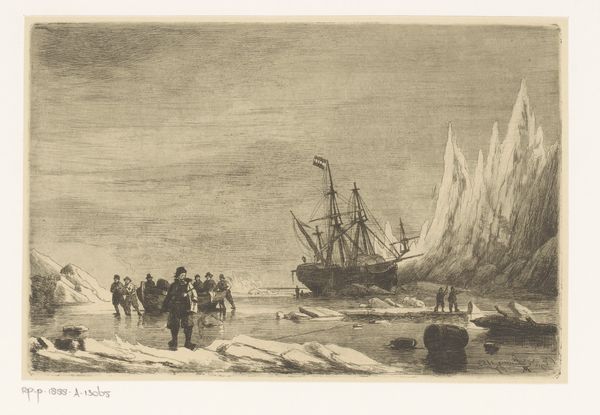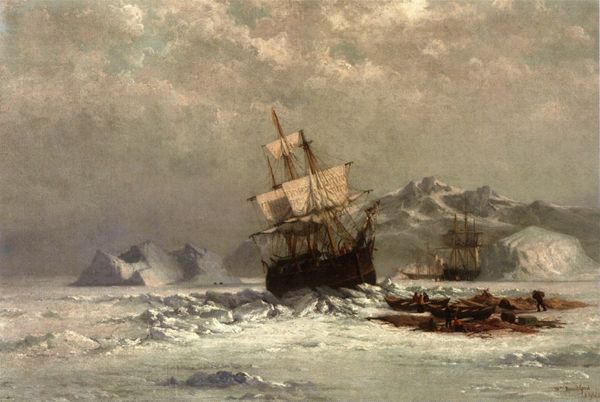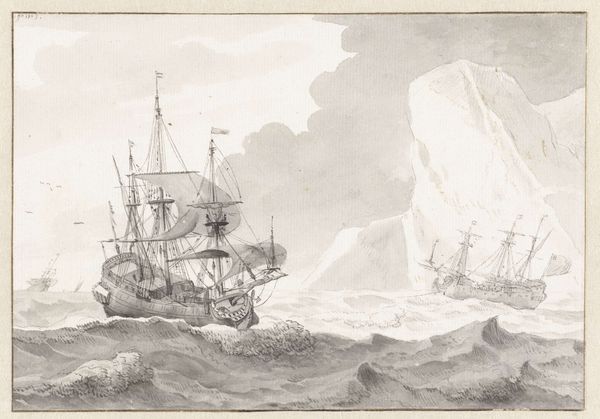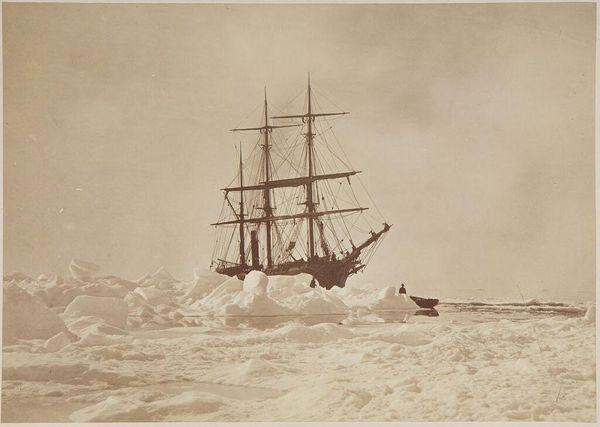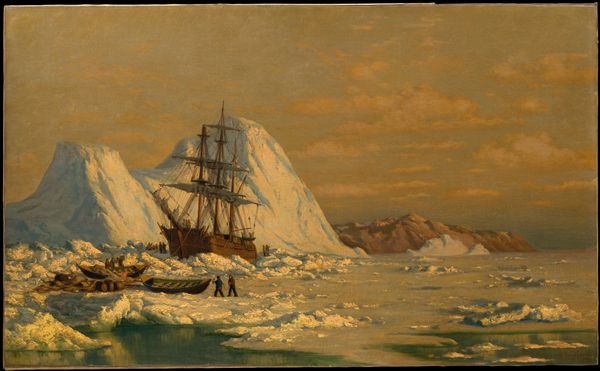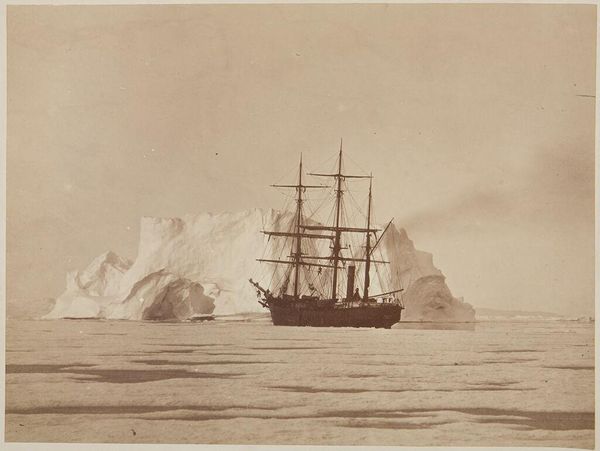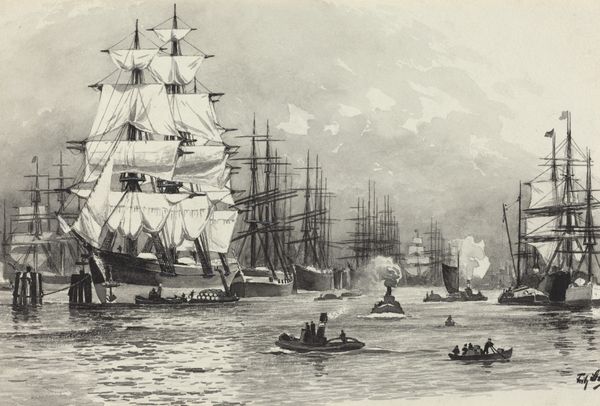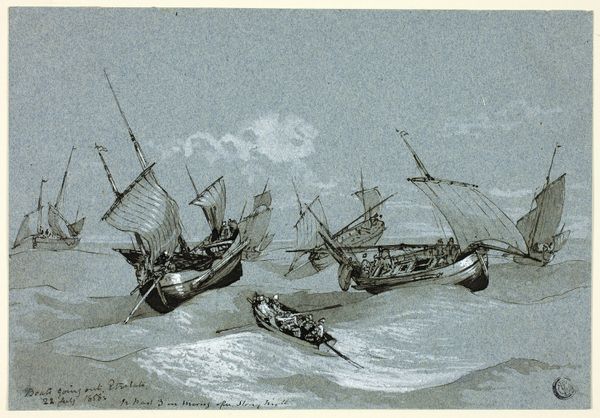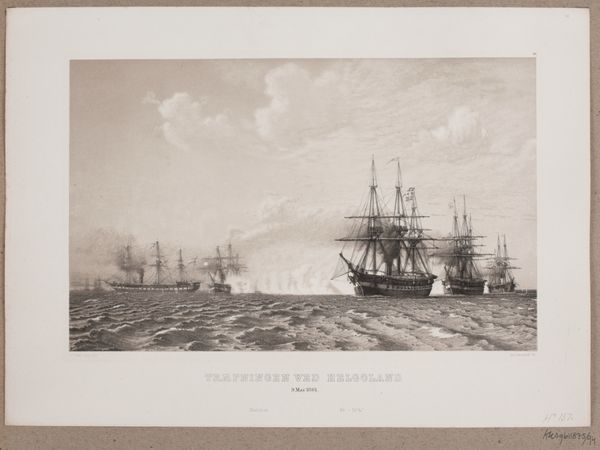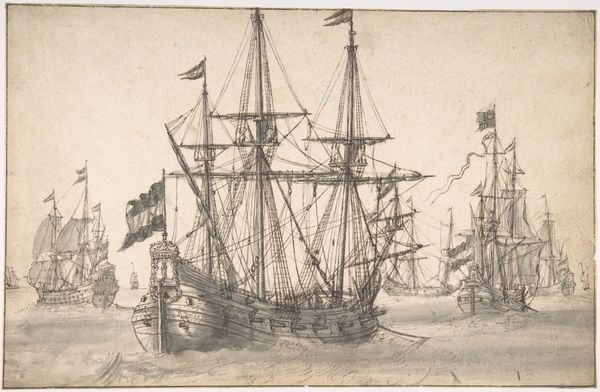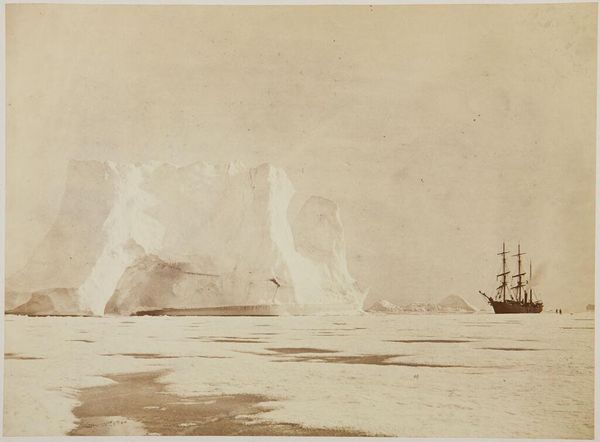
print, etching
# print
#
etching
#
landscape
#
19th century
#
realism
Dimensions: image: 37.78 x 64.14 cm (14 7/8 x 25 1/4 in.) plate: 42.55 x 67.63 cm (16 3/4 x 26 5/8 in.) sheet: 46.2 x 70.8 cm (18 3/16 x 27 7/8 in.)
Copyright: National Gallery of Art: CC0 1.0
Editor: William Bradford's etching, "Among the Ice Floes," made in 1890, presents this scene of ships traversing a field of broken ice. It feels stark and lonely. The tonal range is quite narrow; what visual echoes speak to you when you look at this piece? Curator: The scene, bathed in almost monochromatic light, speaks volumes about the lure and the danger of the Arctic. These ships, emblems of 19th-century exploration, are caught, aren't they, between the promise of discovery and the threat of the relentless ice. Do you notice the human figures clustered near the ships? Editor: Yes, they seem so small and fragile compared to the immensity of the ice and the scale of the ships. Curator: Precisely. Bradford understood that juxtaposition well. Think of ice as a powerful symbol. On one level, it is a beautiful marvel of nature, but it simultaneously signifies constraint, cold, and the crushing force of nature, what mythologies and cultural anxieties do you imagine are stirred by such a stark image? Editor: It makes me think about how ambition can lead people to confront incredibly hostile environments, and the constant risk that entails. Is there perhaps a comment being made about human ambition versus nature's power? Curator: Exactly! It also resonates with broader themes of the era—the drive to explore, the expansion of empires, and the testing of human limits, yet here, humanity is made to appear ephemeral against geological time. The ships, magnificent as they are, are temporary intrusions. The ice remains, doesn't it? A powerful reminder. Editor: I hadn't thought about it that way, seeing the ice as a character itself. Curator: It carries within it an entire narrative, not just of exploration but of resilience, risk, and the ongoing dialogue between humans and the environment. And the silences inherent in the monochrome only deepen that message. Editor: It's much more complex than I initially realized; I now see a deeper symbolic dialogue at play. Thanks!
Comments
No comments
Be the first to comment and join the conversation on the ultimate creative platform.
